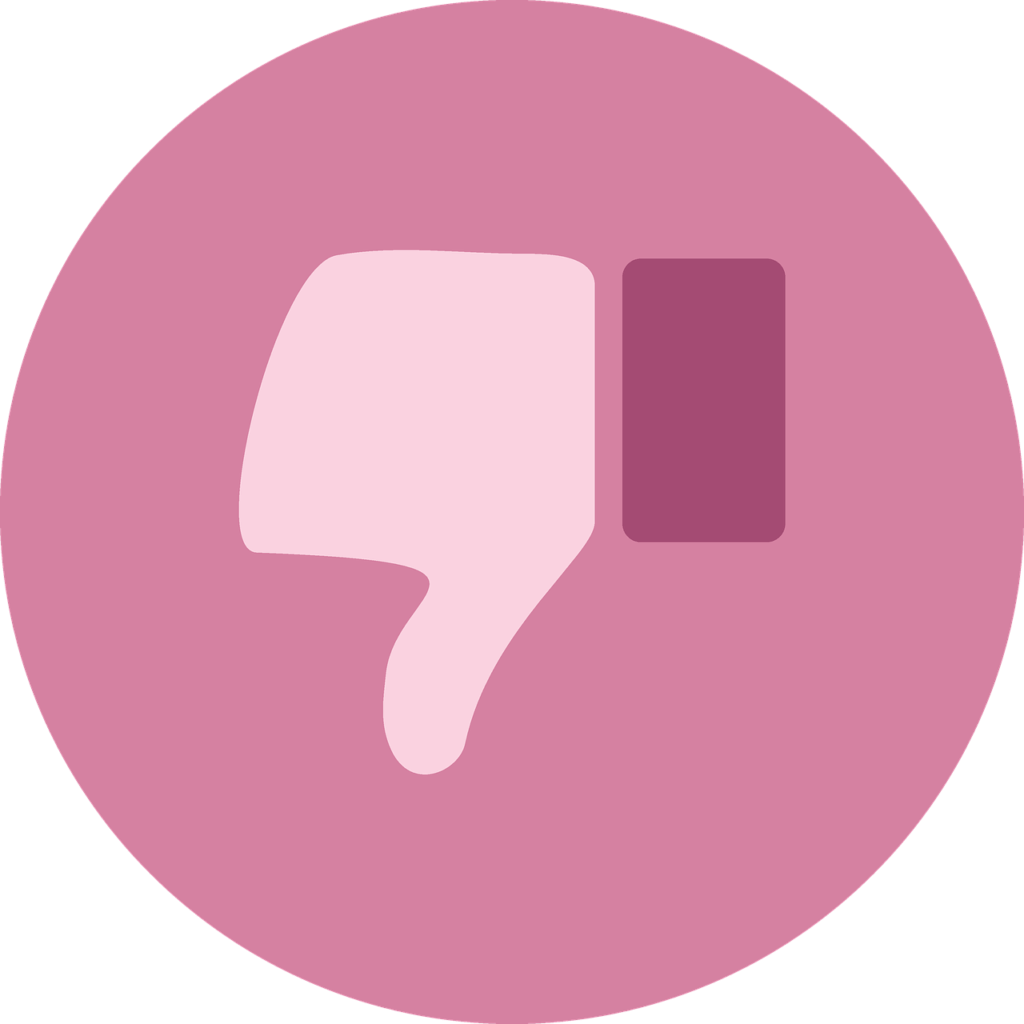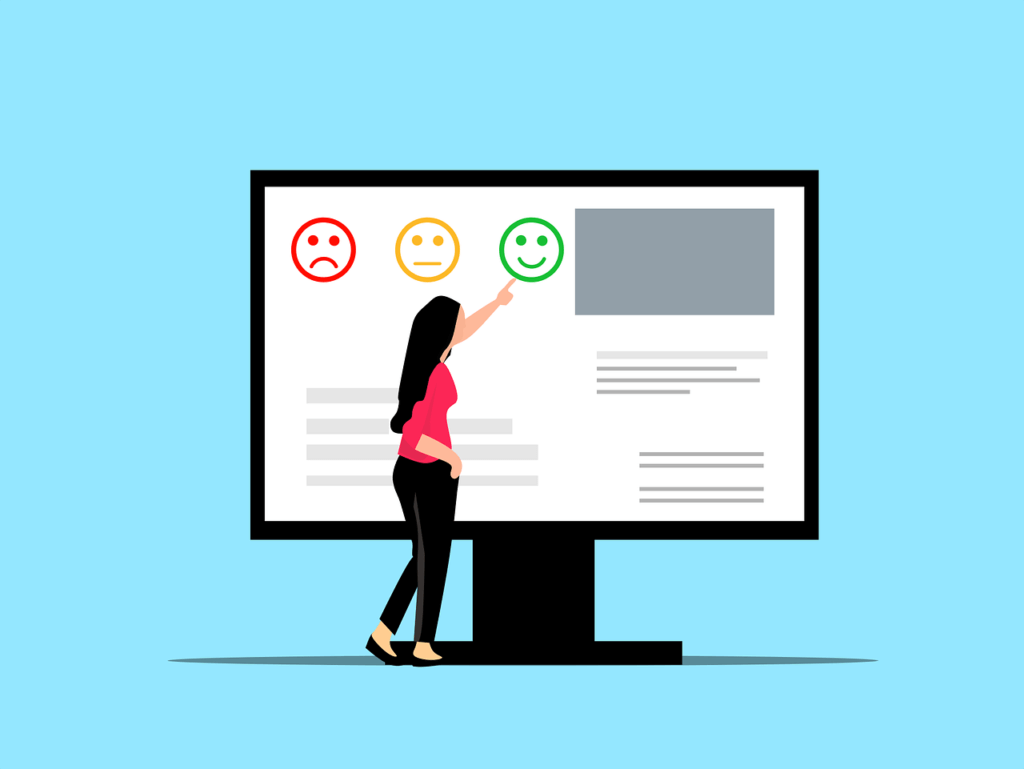You have poured your heart and soul into creating valuable content for your blog, only to find yourself faced with negative comments or feedback. Now, you may be wondering how to handle these less-than-desirable interactions. Rest assured, dear reader, because this article will guide you through the process of navigating and effectively responding to negative comments on your blog. From understanding the importance of constructive criticism to maintaining a respectful and professional tone, you will gain the knowledge and confidence to handle any negative feedback that comes your way. Let’s dive into this insightful journey together.
Responding to Negative Comments or Feedback
Receiving negative comments or feedback on your blog can be disheartening, but it’s important to remember that it’s a part of the blogging journey. Instead of letting it bring you down, take a step back and approach the situation with a calm and level-headed mindset. Here are some steps you can take to effectively respond to negative comments or feedback:
Take Time to Cool Off
It’s completely understandable to feel frustrated or upset when faced with negative comments or feedback. However, reacting impulsively can often do more harm than good. Instead, take some time to cool off and gather your thoughts before responding. This will help you approach the situation with a clear and rational mindset.
Consider the Intent
Not all negative comments or feedback are intended to be malicious. Some individuals may genuinely have concerns or suggestions that they want to share. It’s important to consider the intent behind the comment before formulating a response. By doing so, you can better understand where the person is coming from and address their concerns in a more empathetic manner.
Evaluate the Validity
While it’s essential to consider the intent, it’s equally important to evaluate the validity of the comment or feedback. Sometimes, negative comments may arise from misunderstandings or personal biases. Take the time to objectively assess whether there is any merit to the criticism. This will help you determine the appropriate response and whether any changes or improvements need to be made.
Focus on Constructive Criticism
Constructive criticism can be a valuable tool for improving your blog and content. When faced with negative comments or feedback, try to focus on the constructive aspects. Look for suggestions or specific points that you can work on and incorporate into your future posts. By embracing constructive criticism, you can continue to grow and refine your skills as a blogger.
Avoid Taking it Personally
As a blogger, your work is undoubtedly close to your heart. However, it’s important to remember that negative comments or feedback aren’t a reflection of your worth or capabilities. Instead of taking it personally, try to view it as an opportunity for growth and learning. Responding with a positive mindset will not only help you deal with negative feedback more effectively but also maintain your self-confidence as a blogger.
Addressing Negative Comments Publicly
When negative comments or feedback are posted on your blog for the public to see, it’s crucial to handle them in a professional and timely manner. Here are some steps to follow when addressing negative comments publicly:
Respond Promptly
Whenever possible, respond to negative comments or feedback in a timely manner. This shows your readers that you value their opinions and are committed to addressing their concerns. Prompt responses can help diffuse the situation and prevent it from escalating further.
Acknowledge the Feedback
Start your response by acknowledging the commenter’s feedback. Let them know that you appreciate them taking the time to share their thoughts, even if it’s negative. This helps establish a connection and shows that you’re listening to their concerns.
Stay Professional and Polite
When responding to negative comments publicly, it’s crucial to maintain a professional and polite tone. Avoid engaging in heated arguments or retaliating with negative remarks. Instead, strive to be respectful and understanding in your response. This will not only help you defuse the situation but also leave a positive impression on other readers.
Provide Solutions or Clarifications
Take the opportunity to address the commenter’s concerns and provide possible solutions or clarifications. If there was a misunderstanding, provide clear explanations to help set the record straight. If the commenter has valid points, express your willingness to make improvements or changes moving forward. By offering solutions or clarifications, you show your readers that you value their feedback and are committed to providing a positive experience.
Encourage Further Discussion
End your response by encouraging further discussion on the topic. Let readers know that their opinions are valued and that you’re open to hearing different perspectives. By fostering an environment of open dialogue, you can turn negative comments into opportunities for meaningful conversations that benefit both you and your readers.

Handling Negative Comments Privately
In some cases, it may be more appropriate to address negative comments or feedback privately. Here’s how you can handle negative comments privately:
Reach out Privately
If the comment or feedback seems better suited for a private conversation, reach out to the commenter through a private message or email. Express your desire to discuss their concerns in a more personal setting and provide them with a way to contact you directly.
Express Understanding and Empathy
Once in private communication, start by expressing that you understand and empathize with the commenter’s perspective. Let them know that you value their feedback and appreciate their willingness to share it privately. By showing empathy, you can establish a positive and constructive tone for the conversation.
Ask for Specifics
To better understand the commenter’s concerns, ask for specific details or examples. This will help you gain a clearer picture of the issue at hand and enable you to address it more effectively. By asking for specifics, you demonstrate your commitment to resolving the matter and finding a solution.
Apologize if Necessary
If the negative comment or feedback is valid and has resulted from a mistake on your part, don’t hesitate to apologize. Owning up to your mistakes shows humility and integrity as a blogger. Take responsibility for any shortcomings and assure the commenter that you are taking steps to rectify the situation.
Offer Resolution or Assistance
In the private conversation, work towards finding a resolution or offering assistance. Whether it’s providing additional information, making changes based on feedback, or offering further support, demonstrate your commitment to resolving the issue in a satisfactory manner. By actively seeking resolutions, you can turn a negative experience into a positive one for both the commenter and yourself.
Dealing with Trolls or Abusive Comments
Unfortunately, the world of blogging sometimes attracts trolls or individuals who leave malicious and abusive comments. While it can be challenging, it’s essential to handle such comments with care and professionalism. Here are some steps to take when dealing with trolls or abusive comments:
Don’t Engage with Trolls
Engaging in a back-and-forth dialogue with trolls only fuels their desire for attention and negativity. As tempting as it may be to argue or defend yourself, resist the urge. It’s best to avoid engaging with trolls altogether to prevent the situation from escalating further.
Moderate and Delete Offensive Comments
Take advantage of the comment moderation features on your blog to prevent offensive comments from appearing publicly. Regularly monitor the comments section and delete any comments that contain hate speech, personal attacks, or other forms of abuse. By maintaining a positive and respectful environment, you protect not only yourself but also the other readers of your blog.
Block Repeat Offenders
If a particular individual consistently leaves abusive comments, consider blocking them from commenting altogether. This helps protect your blog and community from further negativity. Blocking repeat offenders often leads to a healthier and more supportive environment for your readers.
Report Serious or Threatening Behavior
If the troll crosses a line and their behavior becomes serious or threatening, it’s important to take action. Report their actions to the relevant authorities or platform administrators. They can assess the situation and take appropriate action to ensure your safety and the safety of your readers.
Seek Support from Blogging Community
Dealing with trolls or abusive comments can be emotionally challenging. Seek support from your fellow bloggers who may have experienced similar situations. They can offer guidance, advice, and encouragement, reminding you that you’re not alone in facing such challenges. By leaning on your blogging community, you can navigate these difficult moments with more resilience and strength.

Learning from Negative Feedback
While it’s natural to feel discouraged by negative feedback, it’s crucial to recognize the value it can bring to your blogging journey. Here’s how you can learn from negative feedback:
Recognize the Value of Feedback
Negative feedback, although difficult to accept, can provide valuable insights and perspectives. Recognize that feedback, whether positive or negative, can help you improve as a blogger and enhance the experience you offer your readers.
Analyze Patterns and Common Criticisms
Look for patterns or common criticisms in the negative feedback you receive. If multiple individuals express similar concerns, it may be an indication that changes or improvements are needed. Take note of these patterns and use them as a guide for refining your blog and content.
Consider Making Changes or Improvements
After analyzing the patterns and common criticisms, consider making the necessary changes or improvements. Embrace the opportunity to grow as a blogger and adapt your content based on the valuable feedback you receive. Use negative feedback as a catalyst for positive change and evolution.
Engage in Self-Reflection
Aside from specific changes, negative feedback can also prompt important self-reflection. Take a step back and assess your own strengths and weaknesses as a blogger. Identify areas where you can further develop your skills or knowledge to provide a better experience for your readers.
Use Feedback to Grow
Ultimately, negative feedback can serve as a stepping stone for personal and professional growth. Embrace it as an opportunity to learn, evolve, and become a better blogger. By using feedback to grow, you pave the way for continuous improvement and success.
Building a Supportive Blog Community
Building a supportive blog community is essential for fostering positive engagement and dealing with negative feedback. Here are some tips on how to cultivate a supportive blog community:
Encourage Positive Discourse
Lead by example by encouraging positive discourse on your blog. Set the tone for respectful and constructive conversations by promoting understanding and open-mindedness. Encourage readers to share their perspectives without fear of judgment or negativity.
Moderate Comments Effectively
Establish clear guidelines for your comments section and moderate comments effectively. Remove any offensive or disrespectful comments promptly to maintain a safe and welcoming environment. Be transparent with your community about your moderation practices to build trust and foster a positive community.
Promote Respectful Interaction
Encourage and promote respectful interaction among your readers. Emphasize the importance of expressing differing opinions in a polite and considerate manner. Set expectations for how your blog community should treat one another and hold everyone accountable for maintaining a supportive atmosphere.
Foster a Sense of Community
Go beyond simply publishing content by actively fostering a sense of community among your readers. Engage with them through comments, social media, and other platforms. Encourage readers to interact with each other, fostering connections and creating a supportive network.
Thank and Appreciate Engaged Readers
Show your gratitude towards readers who actively engage with your content and contribute positively to the community. Recognize their valuable input and thank them for their support. By expressing your appreciation, you reinforce the sense of community and encourage continued engagement.

Seeking Guidance from Experienced Bloggers
When faced with negative feedback, it can be helpful to seek guidance from experienced bloggers who have navigated similar situations. Here’s what you can do:
Connect with Fellow Bloggers
Reach out and connect with fellow bloggers who have more experience in handling negative comments or feedback. Engage in conversations and share your experiences to learn from one another’s insights. Building connections within the blogging community can provide you with valuable guidance and support.
Join Blogging Communities or Forums
Joining blogging communities or forums can provide access to a wealth of knowledge and expertise. Participate in discussions, ask questions, and seek advice from experienced bloggers. These communities often foster an environment of mutual support and collaboration.
Seek Mentoring or Advice
If you have a particular blogger you admire or aspire to emulate, consider reaching out to them for mentoring or advice. Many experienced bloggers are open to sharing their knowledge and helping newcomers navigate the ups and downs of blogging.
Learn from Their Experiences
Take the time to learn from the experiences shared by experienced bloggers. Read their articles or blog posts about handling negative feedback. Often, they offer valuable insights and strategies that can help you effectively navigate similar situations.
Benefit from Shared Knowledge
Remember that blogging is not an isolated journey. Leverage the collective wisdom and shared knowledge within the blogging community. By learning and benefiting from the experiences of others, you can grow as a blogger and handle negative feedback with more confidence and grace.
Taking Care of Your Emotional Well-being
Handling negative feedback can sometimes take a toll on your emotional well-being. It’s essential to prioritize self-care and maintain a healthy mindset. Here are some ways to take care of your emotional well-being:
Maintain Perspective
When faced with negative comments or feedback, it’s crucial to maintain perspective. Remember that it’s just one person’s opinion and does not define your worth as a blogger. Focus on the positive impact you’ve made and the readers who appreciate your content rather than dwelling on the negative.
Vent to a Trusted Friend or Family Member
If negative feedback starts to affect you emotionally, find a trusted friend or family member to vent to. Share your feelings and frustrations with someone who understands and supports you. Sometimes, simply letting it out can help alleviate the emotional burden.
Practice Self-Care
Engage in activities that promote self-care and well-being. Whether it’s going for a walk, practicing meditation, or indulging in a hobby, prioritize activities that bring you joy and help you unwind. Taking care of yourself is essential in maintaining resilience and a positive mindset.
Focus on Positive Feedback
Counterbalance the negativity by focusing on the positive feedback you receive. Remind yourself of the compliments, praise, and support you’ve received from your readers. Reflect on the positive impact your blog has had on others and let that serve as a source of motivation and encouragement.
Remind Yourself of the Purpose of Blogging
Revisit the reasons why you started blogging in the first place. Remind yourself of the passion and purpose behind your work. By reconnecting with your original intentions, you can regain focus and ensure that negative feedback doesn’t derail your dedication to your blog and its goals.

Handling Negative Feedback on Social Media
Negative feedback on social media platforms can sometimes feel overwhelming due to its public nature. Here’s how you can handle negative feedback on social media effectively:
Monitor Social Media Channels
Stay vigilant in monitoring your social media channels for comments or feedback. Promptly respond to both positive and negative feedback to show your engagement and commitment to your audience. Proactive monitoring allows you to address negative feedback promptly before it escalates.
Stay Professional in Responses
When responding to negative feedback on social media, always maintain a professional tone. Avoid getting defensive or engaging in heated arguments. Reply with clarity, empathy, and professionalism to demonstrate your commitment to addressing concerns.
Use Private Messages for Resolution
Consider moving the conversation to private messages or direct messages if the negative feedback requires a more in-depth or personal response. This allows you to address the concern in a less public manner. Offer to discuss the matter privately to find a resolution that satisfies both parties.
Prevent Escalation
When handling negative feedback on social media, it’s crucial to prevent the situation from escalating further. Avoid engaging in lengthy debates or responding to trolls. Instead, focus on resolving the issue with the individual directly involved. By keeping the conversation centered and private, you can prevent unnecessary public conflicts.
Leverage Positive Engagement
Use positive engagement on social media to counteract negative feedback. Encourage your followers to share their positive experiences with your blog or content. By amplifying positive engagement, you can build a more supportive community that can help drown out negative voices.
Turning Negative Feedback into Content Opportunities
Negative feedback can, surprisingly, present opportunities to create valuable content and engage with your audience. Here’s how you can turn negative feedback into content opportunities:
Address Concerns in a Blog Post
If multiple readers express similar concerns or have common questions, address them in a dedicated blog post. This not only helps you provide valuable information to your readers but also shows that you are responsive to their needs and concerns.
Write a Response or Clarification
Sometimes, negative feedback may arise due to a misunderstanding or miscommunication. In such cases, write a response or clarification post to clear up any confusion. Offer additional context or explanation to help your readers understand your perspective better.
Share Lessons Learned
Learning from negative feedback is an opportunity to share valuable lessons with your audience. Write a post detailing what you’ve learned from the feedback and how you plan to improve. Transparency and willingness to learn resonate with readers and can turn a negative situation into a positive one.
Create Engaging Conversations
Instead of shying away from negative feedback, use it as a catalyst for creating engaging conversations. Craft blog posts or social media discussions around the topic, inviting your readers to share their thoughts and perspectives. By encouraging dialogue, you foster a sense of community and build stronger connections with your audience.
Convert Negativity into Positivity
Transform negative feedback into an opportunity to highlight positive aspects of your work. Write posts that showcase the positive impact your blog has had, success stories, or testimonials from satisfied readers. By shifting the focus from negativity to positivity, you create a more uplifting and inspiring atmosphere.
Handling negative comments or feedback is an inevitable part of being a blogger. By approaching negative feedback with a level-headed mindset, addressing concerns professionally, and leveraging opportunities for growth, you can turn negative experiences into valuable learning moments. Building a supportive community, seeking guidance from experienced bloggers, and prioritizing your emotional well-being are essential in navigating the challenging aspects of blogging. Remember, every negative comment or feedback is an opportunity for improvement and growth on your blogging journey.



